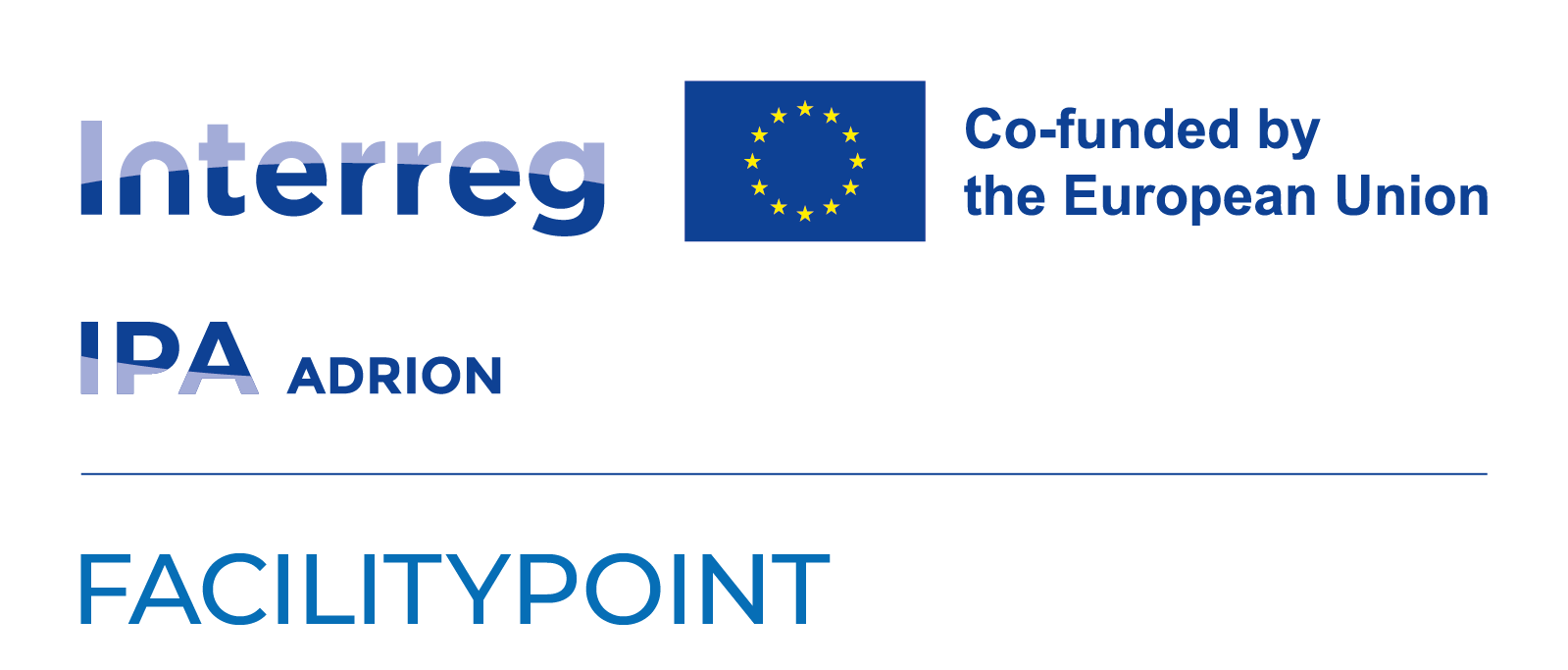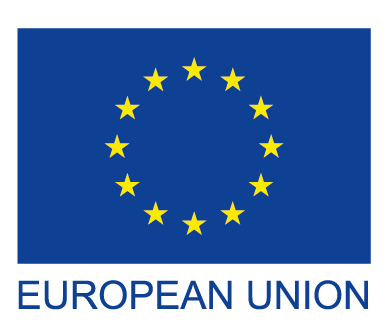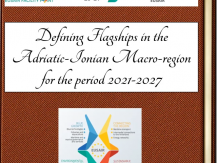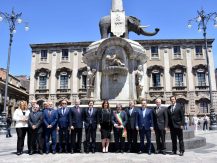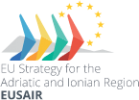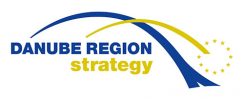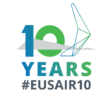Two EUSAIR Pillar 4 Sustainable Tourism events held in Bosnia and Herzegovina
Last week, representatives from 10 member countries of the EU Strategy for the Adriatic-Ionian Region (EUSAIR) gathered at the Termag hotel in Olympic Centar Jahorina, Bosnia and Herzegovina, to discuss sustainable tourism and youth engagement in the tourism sector. Co-organized by the Ministry of Tourism and Sports of the Republic of Croatia and the DEI Directorate for European Integration of the Council of Ministers of Bosnia and Herzegovina, the events were held in hybrid format and aimed to prepare for the upcoming INTERREG IPA ADRION 2021-2027 programme opening call for proposals. The revision of EUSAIR Action Plan was also discussed, with implications for EUSAIR implementation in the future.
The Ministry of Tourism and Sports of the Republic of Croatia as the coordinator of the EUSAIR Thematic Pillar 4 Sustainable Tourism and project partner on the INTERREG ADRION Facility Point Project and representatives of the DEI Directorate for European Integration of the Council of Ministers of Bosnia and Herzegovina, a Member country that currently chairs the EU Strategy for the Adriatic-Ionian Region, were co-organizers of the Round Table "Youth in Tourism Sector" and the 20th EUSAIR TSG 4 meeting. The events took place last week at the Termag hotel, in the Olympic Centar Jahorina, 30 km from Sarajevo, in the format of hybrid events and with the participation of representatives of all 10 Member countries: Italy, San Marino, Slovenia, Bosnia and Herzegovina, Montenegro, Serbia, Albania, North Macedonia, Greece and Croatia. The events were held in the context of upcoming INTERREG IPA ADRION 2021-2027 programme opening call for proposals, the first one from the new multi-year financial perspective 2021-2027, announced for Tuesday, April 4, 2023, as well in the context of the revision of EUSAIR Action Plan, which will significantly influence the EUSAIR implementation in the future period.
EUR 1,422 billion available until 2027
The EU funds multi-year financial perspective 2021-2027 a total of EUR 1,422 billion intends to the member countries for their projects in the sector of tourism through 15 adopted programs and/or funds. IPA countries can participate in 6 of them - pointed out in his presentation at the events Georgios Emmanouil, from the European Commission, DG REGIO D1, IPA/EUSAIR/EU Accession Negotiations Team. Western Balkan Investment Fund 2021-2027 is also available to the countries of the Western Balkans.
How much of this tourism stakeholders, public and private, will be able to use depends on the sector's readiness and willingness to face its own challenges, on the one hand, and the sector's capacity to successfully manage it, on the other. Among the biggest challenges of the sector in the entire Adriatic-Ionian macro region are: the lack of workforce, with a large fluctuation of the existing one, outdated programmes of all levels by which the workforce of the tourism sector is currently educated - from vocational schools level to higher education institutions and institutions for adult education levels, lack of legal regulation of the sector or, if exists, an insufficient control of its implementation in the practice, especially in the part related to labour laws and labour rights of the employees.
Tourism is a labor-intensive activity that consumes to the point of burnout
Tourism is a labour-intensive activity that is extremely consuming workforce and very often leads to burnout. The consequences are manifested globally in the entire sector. The round table sought to highlight the importance of the role of young people in sustainable tourism, define the opportunities and challenges they face in the sector, and point to examples of good practice.
It’s well known that young people temporarily solve their unemployment by seasonal work in tourism sector, and job in tourism is usually their first job. Although tourism proves to be the most open sector in terms of the possibility and the speed of career growth, young people often feel exhausted by that work, related to hard working conditions and inadequate compensation. Consequently, very soon they leave the sector forever.
As there is a public perception that chefs are in a privileged position within the tourism sector, with regard to working conditions and salaries, and due to media promotion through various culinary competitions, the profession of chef is becoming more and more attractive to young people, his five years of experience working as a young chef in Bosnia and Herzegovina , but also abroad, Karlo Kovačević from Bosnia and Herzegovina shared with the participants of the round table, comparing the same. As in Bosnia and Herzegovina there is still a lack of legal regulation, and thus insufficient protection of the workforce in the field of tourism from hard working conditions and the arbitrariness of employers, in the more tourism developed neighbouring countries where he had the opportunity to work, a net salary of EUR 2,000 seems at the first sight to be an extremely attractive and market-correct compensation for the work, but, at the second sight, if it includes 16-hour working hours without a day off and with several months of accommodation in a small space with a few unknown people, a space insufficient for quality rest after hard work, that salary turns out to be less attractive and becomes minimal for the number of hours worked and working conditions in which they are performed. Due to the lack of manpower, Karlo Kovačević pointed out, one person very often does work for two to three people, burnout occurs, which most often results in a complete exit from the sector - some of his young chef colleagues left the industry and continue their careers in the IT sector with requalifying themselves.
And while large hospitality international and national employers implement legal regulations, and are additionally regulated by collective agreements and their own internal regulations, offering to the employees attractive compensation packages and run their own internal academies for upskilling or reskilling workforce, they participate with only 15% in the sector in Croatia, so it can be concluded that only 15% of the tourist market is well regulated – presented to the audience Josipa Jutt, general manager of the Hilton Hotels cluster in Zagreb and director of Zagreb City Hotels, a company that primarily deals with the development and management of hotels and the president of the Association of Hoteliers at the Croatian Chamber of Commerce, with more of 20 years of work in tourism and international hotel management.
Due to curriculum obsolescence, the second most common problem facing the tourism sector, Hilton has changed its employment practices and places greater emphasis on the enthusiasm, motivation and effort that potential candidates are willing to invest in developing their careers, rather than on formal education completed and previous work experience gained. With their own internal academy that they created and launched in order to educate the staff they need, like many other large hotel companies, this changed recruitment practice has shown great results. In addition to the above, Josipa Jutt pointed out that we must do not forget the demographic process of population aging and the decreasing share of young people in the total population as one of the causes of current and future workforce problems in tourism sector.
In Croatia, according to the Croatian Employment Service, the tourism sector currently lacks about 10,000 workers in tourism, and it is no longer possible to count on filling the capacity from the labour pool of neighbouring countries so Croatian tourism sector is increasingly turning to the import of workforce from Asian markets: the Philippines, Nepal and India. In Bosnia and Herzegovina, according to the research conducted by Nemanja Šarenac, from the Pale Faculty of Economics, University of East Sarajevo, the difference between demand and supply is negative for 8,000 workers in the sector. The lack of workforce in tourism is no longer a national, regional or macro-regional problem and is manifested globally, about which there is more and more data and analysis.
Progress and examples of positive practice still exist, and Nina Kovač, Quality Assurance and Human Capital Development Specialist from the USAID Developing Sustainable Tourism in Bosnia and Herzegovina project, Mak Muratović, tour guide and founder of the successful travel agency Art Tourism from Sarajevo and Nikola Petrović from the travel agency Active Holidays Bosnia share their experience with the audience. USAID Tourism is implementing in Bosnia and Herzegovina a five-year project worth 20 million dollars USAID Developing Sustainable Tourism in Bosnia and Herzegovina, in which public and private stakeholders are involved, with the aim of strengthening the capacity of the tourism sector in the field of sustainable tourism, developing new and modernizing existing curricula and as a support to the development of new and innovative tourist products. The project is being implemented from 2020 to 2025 and is already showing visible and measurable positive outcomes. Innovative tourist products, innovative itineraries, participatory tourism and constant investment in human capital are the key to the success of Art Tourism and Active Holidays tourist agencies, the owners of the agencies pointed out and described in more detail.
As a representative of the younger generation and the academic sector, Emanula Zadrima, a student of the Faculty of Culture and Tourism, Department of International Hotel Management, spoke about educational programs for the tourism sector in Montenegro. Positive examples from Italy in the field of education and youth employment in the tourism sector were presented by Francesco Felici, general director of tourism planning and policy of the Italian Ministry of Tourism, about the progress that Italy is making in the field of human resources development in tourism.
The implementation of the EUSAIR through the Facility Point Project pays great attention to young people, and young people are addressed and involved in EUSAIR implementation in the format of workshops, summer schools, presentations, lectures in schools, colleges and faculties and through the activities of annual EUSAIR forums and other EUSAIR events. The EUSAIR Communication Academy, launched in 2022, has proved to be an extremely successful format in that purpose and will continue this year as well. In addition to the above, the competition for the best entrepreneurial idea of young people aged 12 to 29 - POPRI, which has been held in Slovenia for 20 years, since 2021 has been opened to the participation to EUSAIR member countries. Since the Izola Declaration (2021), work has also been done on the formalization of the inclusion of young people in EUSAIR – was the key points of the presentation by Olga Abram, a representative of the leading partner in the Facility Point Project.
The round table was preceded by the 20th meeting of the EUSAIR TSG 4 Sustainable tourism, in which, in addition to representatives of the member countries of the Strategy, guests from the European Commission, the European Institute for Cultural Routes, the INTERREG IPA ADRION Joint Secretariat, the Danube Macroregional Strategy and external experts engaged in providing services for the implementation of the EUSAIR strategy participated. In addition to the operational-administrative part of the reporting on the activities completed and plans for the next period, the meeting also included the presentation of two manuals issued by the Ministry of Tourism at the end of last year:
